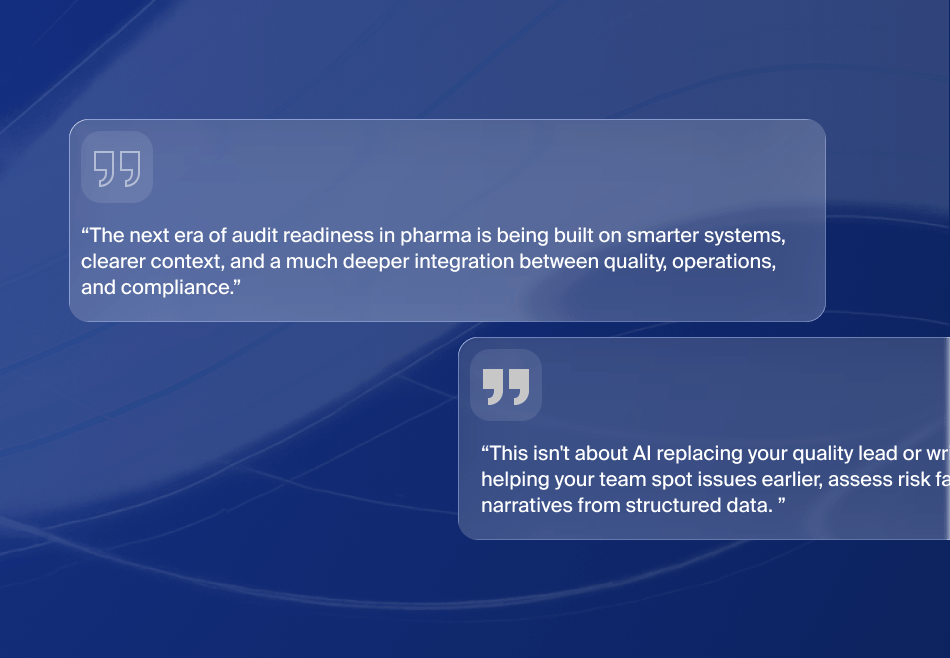By the Numbers
Ensuring pharmaceutical products meet regulatory quality standards is critical for business success, especially now. Companies that consider quality an afterthought do so at their peril. Companies meeting those standards are finding more of them approved at a faster rate than ever before.
- 209 new drugs were approved by the FDA from 2000 – 2008
- 302 new drugs were approved by the FDA from 2009 – 2017
- 59 new drugs were approved in 2018, an all-time record
- 53 new drugs were approved in 2020, #2 all-time
- FDA review times decreased from more than three years in 1983 to less than one year in 2017
- Between 2011 – 2015, the FDA approved 170 new drugs compared to 144 for the European Medicine Agency, while also doing it 60 days faster
- The FDA approved 168% more drugs in 2018 than in 2016 because companies met quality standards
Figure: 1FDA Approvals for Pharmaceutical Products
Introduction
Quality plays a pivotal role in the success of any business. Shipping delays now are often caused by products not meeting mandated quality standards. This adds stress to production environments and can potentially impact a company’s public perception. For example, 2018 saw 73 drugs subjected to FDA recalls, market withdrawals and safety alerts.
Companies saying yes to sub-standard products to the market are finding the results can be catastrophic. Some of the damage can be irreparable.
Those embracing modern-day Quality Management by supporting technology initiatives are finding success. These firms ensure that the right systems are in place to allow a product to pass all quality checks.
Continuing to embrace changing technology can help manufacturers in highly regulated industries leveraging it to stay ahead of their competition.
Figure: 2Classification of Quality Management
The Evolution of Quality Management
Today, quality management has evolved from being an afterthought to a rigorous self-discipline that most modern manufacturing companies embrace. Quality control in the 1960s has evolved to become today’s “total quality control.”
The US FDA is tightening its norms to ensure higher quality standards before approving medicines for sale. Pharmaceutical manufacturers are responding to such challenges by increasing their quality standards as shown in the graphic below.
Figure: 3 The Evolving Definition of Quality Management
Process Improvements in Quality Control
Improvements always start by understanding departmental issues. Some typical activities in a pharmaceutical company’s Quality Control department are highlighted by:
- Managing quality control tests
- Managing quality control specialists and their workload
- Allocating and calibrating test instruments
- Establishing appropriate test methods
- Documenting test specifications
- Performing tests in priority order
- Accurately recording test results
Following up on this involves analyzing trends and quality data plus running stability studies on batches. This is just a quick and simplified view; in reality, all of the activities listed above have many details involved. Ensuring that all processes and procedures are handled with precision ultimately reflects on how well a company maintains its quality standards.qc pharma
Get a consultation to learn more about Improving Pharmaceutical Quality Control and Systems.
Processes in the Quality Department
A typical day in the life of a Quality Control department could start with lab analysis and paper requests to perform quality tests on a sample batch. There could be multiple batches for different products produced in-house or received from third party manufacturers.
The quality lab prepares test instruments for each test. It accurately records the test results along with any digital signs-off recorded for each work order. Taking a quick view of what is involved in “getting it right,” an understanding of all essential requirements for an optimal quality process could change.
“Use cases with digitization and automation have demonstrated a more than 65% reduction in deviations and over 90% faster closure times.”
Achieving optimal quality requires precisely following standard—and possibly regulated—operating procedures. Deviations are not allowed unless the “method to deviate” is clearly spelled out.
Getting staff to meet the optimal quality goal is challenging without a stringent system in place. For example, using a paper-based system requires adding laborious tasks with corrections and piled up paperwork. Every time an audit occurs using this system requires digging through stacks of paper to find the right answers.
Figure: 4: A Central Filing System to Manage Documents and Information
Quality Control Systems
Pharmaceutical companies that are implementing an electronic system need to decide how tightly to build their system. Some users may be uncomfortable with various systemic restrictions or uneasy when user errors are found.
People could start feeling anxious about making mistakes since every change has a digital stamp tying the person modifying the data. Fixing errors can become cumbersome especially when using a controlled and validated system that is 21 CFR part 11 compliant.
Effective QC systems replace discomfort by getting users to develop good habits. This starts by providing them with clear, accurate and thorough information about how the overall system works. A well-planned training plan can help users move from discomfort to being champions promoting the process in the organization.
People with a basic understanding of compliance prefer an electronic system for its strength and ability to capture real-time data. Instead of continuously fixing errors, workers proactively do it right from the start.
When the goal is to boost efficiency throughout an entire organization consider evaluating a reliable process that can be quickly adapted by the QC department.
Elimination of up to 80% of manual documentation work will improve productivity.
What Plant Managers Look for in Quality Management Challenges
Plant Managers have specific views of the business since they oversee the overall plant operations. Key concerns plant managers or general manager address include:
- Quality Management
- Compliance with evolving regulatory standards
- Taking control of documents such as Certificates of Analysis (COAs)
- Safety
- Corrective and Preventative Actions management (CAPA)
- Location directives
- Raising flags when two reactive chemicals are placed in proximity
- User adaptability and training to conform to the new Quality standards
These concerns are typically addressed by:
- Efficient Document Management. It allows you to centralize documents into a secure repository that is seamlessly accessible. This ensures quicker decision making and effective change management. It also helps in ensuring document visibility, enhances product traceability by tracking amendments and documents safety with revision control features.
- Addressing non-conformance. Meeting this requirement can be done through a unified platform to log non-conformance, noting the quality of incoming raw materials plus reviewing complaints, delays and other issues. This helps in addressing compliance at an early stage, paving the way for corrections and registering them in the system.
- Corrective & Preventive Actions. Having software that documents these while adding built-in advanced analytical features built in helps companies learn from past actions. Registering a non-conformance incident into the system initiates a workflow for corrective measures. This system learns from past incidents and recommends preventive actions to prevent or reduce similar incidents from occurring again.
- Implementing the right kind of tools and technology such as can help with process automation and reduce data entry errors while also tracking process efficiency.
Identifying the right system to help make the most impact is the first essential step to moving in the right direction. After crossing that hurdle, it’s important to build a “to be” mindset instead of worrying why the system doesn’t perform as it did in the past.
Evaluate how stringent you want your process to be based on your company’s needs and then accommodate a well-defined method that is native to the application.
Key Takeaways
Quality management is no longer an afterthought. It has evolved to become a discipline in most prosperous manufacturing organizations. Once considered a business function that hindered speed to market and product launch, quality management now embraces modern technologies – fueling innovation, adding efficiency, eliminating the scope of incidents within a plant, and offering better predictions for the future.
- Pharmaceutical companies that evolve to modern, automated quality control systems are able to empower their workforce to rapidly adopt process improvements and optimize all the functions in the department.
- Adopting better tools in one department typically sets the standard for the entire ecosystem. It includes functions such as regulatory compliance, procurement, demand management, research & development plus inventory and warehouse management.












